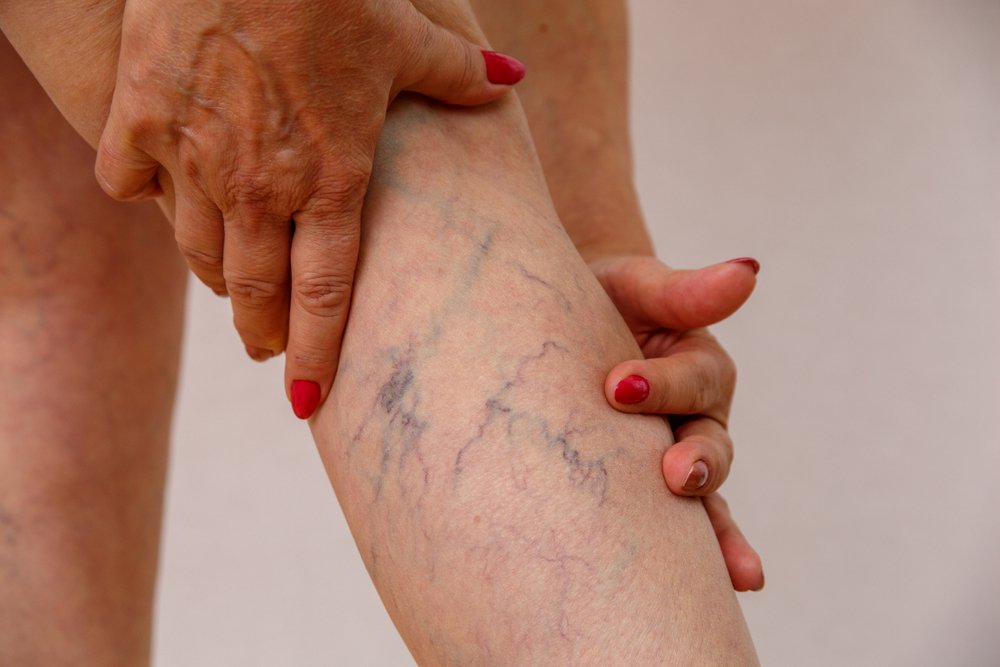
Spider veins are a common condition that affects millions of individuals worldwide, causing twisted and swollen veins on the legs or other parts of the body. Although they are generally considered harmless, spider veins can cause physical discomfort and self-consciousness, leading many people to seek treatment options. While spider veins are usually not harmful to one's health, they can sometimes indicate underlying circulatory issues, making it essential to address them.
At Sinai Vein and Vascular Center, our team of board-certified vascular specialists and vein surgeons offers a wide range of treatment options for spider veins and other vascular conditions.
Here is everything you need to know about spider veins.
What Are Spider Veins?
Spider veins, also known as telangiectasias or varicose veins, are small, dilated blood vessels that appear near the surface of the skin. They are usually red or blue in color and appear as a spider web-like pattern, hence the name. Spider veins typically develop on the legs, specifically the thighs, calves, ankles, and feet, but can also occur on other parts of the body such as the face. They are commonly seen in women, but men can also develop them.
What Causes Spider Veins
Spider veins, also known as telangiectasias, are caused by a variety of factors. One of the primary reasons people develop spider veins is genetics. If someone in your family has them, you are more likely to develop them as well. Hormonal changes during puberty, pregnancy, and menopause can also cause spider veins. Women tend to be more prone to spider veins than men due to hormonal fluctuations.
Prolonged standing or sitting is another common cause of spider veins, as it increases pressure on the veins, causing them to dilate and become visible beneath the skin. Other risk factors for spider veins include obesity, trauma to the affected area, and exposure to the sun.
In some cases, spider veins may be an indication of an underlying circulatory issue such as venous insufficiency. This condition occurs when the valves within the veins do not work properly, causing blood to pool in the legs. When this happens, veins become enlarged and visible, leading to spider veins.
Can Spider Veins Affect Your Health?
Spider veins are generally considered a cosmetic issue and do not impact a person's health. However, in some cases, spider veins can cause physical discomfort or signal an underlying health problem. In rare cases, spider veins may be a sign of deep vein thrombosis (DVT), a blood clot that forms in the deep veins of the leg. If left untreated, DVT can lead to serious complications such as pulmonary embolism and stroke.
Additionally, spider veins can cause aching or burning sensations in the affected area, particularly if they are located on the legs. This discomfort can interfere with daily activities, such as standing for long periods of time. Spider veins can also cause embarrassment or self-consciousness, which can have a negative impact on a person's mental health. While spider veins themselves do not pose a significant risk to a person's health, it is essential to discuss any concerns with a healthcare professional to rule out any underlying conditions.
If you are experiencing pain or discomfort associated with spider veins, treatment options are available, including sclerotherapy, laser therapy, and radiofrequency ablation. These treatments can help reduce the appearance of spider veins and alleviate any physical discomfort associated with the condition.
How Are Spider Veins Treated?
Spider veins are a common cosmetic concern that affects many people, particularly women. However, spider vein treatment options are available to reduce their appearance and alleviate any physical discomfort they may cause.
The most common treatment option for spider veins is sclerotherapy. During this procedure, a solution is injected into the vein, causing it to collapse and eventually fade from view. Sclerotherapy is a minimally invasive procedure that can be completed in under an hour and requires no anesthesia.
Laser therapy is another option for spider vein removal. Laser treatment uses focused light energy to damage the vein, causing it to break down and disappear over time. Radiofrequency ablation is also a treatment option where heat energy is used to destroy the vein. Each of these treatments has its benefits and risks, and a healthcare professional can help determine which treatment approach is best suited to your needs.
How Can Spider Veins Be Prevented?
Although spider veins can be a common cosmetic issue, there are steps you can take to help prevent them from forming. Maintaining a healthy weight is an important factor in preventing spider veins. Extra weight can put additional pressure on the veins, making them work harder and dilate over time. Additionally, avoiding prolonged periods of sitting or standing can help prevent spider veins from forming. If you work in a job that requires you to stand or sit for long periods, be sure to take breaks and walk around periodically to improve circulation.
Exercise is also an essential factor in preventing spider veins. Activities that promote good circulation, such as walking, running, and swimming, can help keep your veins healthy and reduce the likelihood of spider veins forming. Wearing compression stockings can also help prevent spider veins by providing pressure that encourages blood flow back up towards the heart.
If you have a family history of spider veins or have already developed them, it's essential to discuss preventive measures with a healthcare professional. They can provide additional guidance and recommend specific lifestyle changes or treatment options that may help prevent or reduce the appearance of spider veins.
If you notice the appearance of spider veins, it's important to seek treatment to ensure active veins are addressed and to prevent the development of any additional spider veins as well as addressing any underlying issues.
If you are struggling with spider veins, contact our board-certified physicians at Sinai Vein and Vascular Center to discuss treatment options or schedule an appointment directly from our website today.
